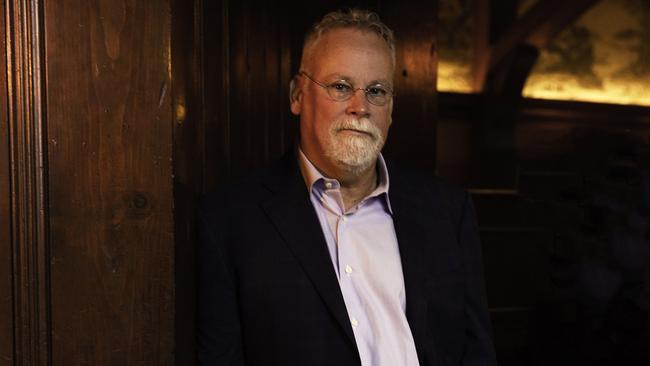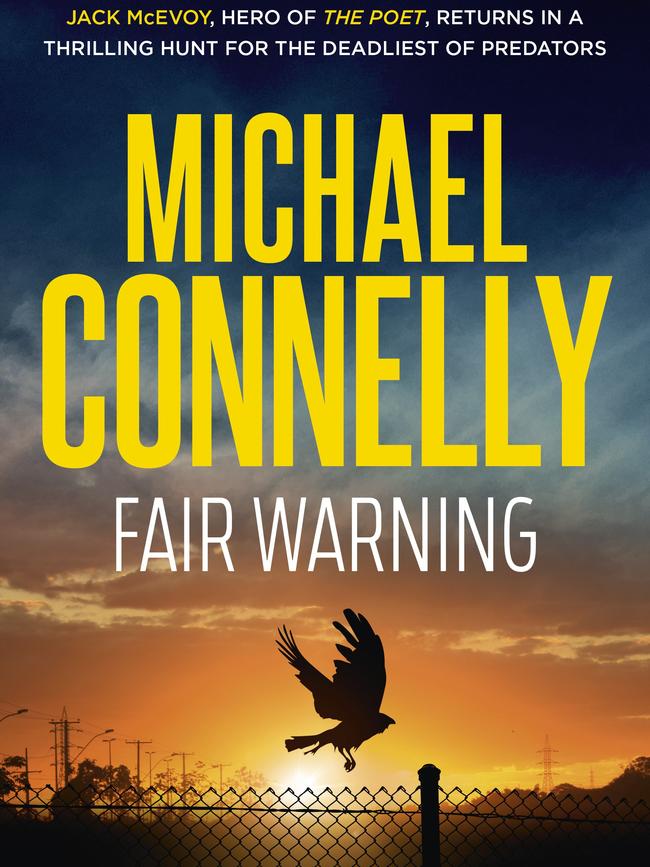Michael Connelly’s Fair Warning: forensic take on chilling serial crime
This is a chilling tale where the tension increases as journalist Jack McEvoy and his confederates circle the perpetrators.

The Innocence Project in the US and elsewhere has become famous for addressing miscarriages of justice. Its legal teams challenge wrongful convictions that often are based on inadequate defence, false confessions or witness errors. But the principal tool is DNA: evidence that is irrefutable.
But what if the DNA testing at the lab is subject to malfeasance? Corruption of DNA evidence is the core issue in Michael Connelly’s gripping new book, Fair Warning.
A fair warning for readers: this is not a Harry Bosch detective thriller. The central character is one of Connelly’s stock company of Los Angelenos: journalist Jack McEvoy, who has confronted malignant villains in previous novels such as The Poet and The Scarecrow.
McEvoy, late of the Denver Mountain News and the LA Times, is now working with Fair Warning, a non-profit digital publication that specialises in consumer cases. While it is small, its stories are picked up from time to time by mainstream outlets such as The Times or The Washington Post. Its publisher, Myron Levin, is of an older school of journalism. He plays by rules and understandings that sought to govern journalism in an ethical way in times past.

Fair Warning is real — Connelly is on its board — and so is Levin. Connelly has a knack for introducing real people, places and events into his fictionalised portraits of unspeakable crime.
This novel opens with the gruesome murder of a young woman named Tina Portrero. She was picked up in a bar by a serial killer known as The Shrike because, like the bird, he strikes from behind. McEvoy, we learn had a brief dalliance with her. Enter the LAPD.
The detectives are the classic Dragnet good guy-bad guy team, with Detective Mattson on the offence and Detective Sakai the observer. They look at McEvoy for the obvious reason, but Mattson’s real interest in the journalist is because of a story he wrote some time before that ended in the death of Mattson’s fellow detective and close friend, Rodney Fletcher.
The detectives regard McEvoy as a suspect and also warn him as a journalist to stay away from the case and not interview witnesses. When McEvoy persists with inquiries, he is arrested. A confrontation ensues in the offices of Fair Warning. McEvoy is pleased to discover that Myron will back his journalist to the hilt.
“I felt good. I felt supported and protected. It was not a good time to be a journalist. It was the era of Fake News and the reporters being labelled by those in power as enemies of the people. Newspapers were folding right and left and some said the industry was in a death spiral … But in the way Myron had handled Mattson, I saw a throwback to the days when the media was undaunted, unprejudiced and therefore could not be intimidated.”
His first amendment rights reaffirmed, McEvoy delves deeply into the world of DNA identification: laboratories, coroners, criminal investigations and expert witnesses.
In the US, this is largely unregulated, as the Food and Drug Administration moves at a glacial pace in drafting an appropriate legal framework. The legal vacuum allows criminals to prosper.
The Shrike has killed women across the US. Connelly knows that hardened criminals commit crimes in different jurisdictions and trust that America’s patchwork law enforcement will not always join up the dots.
This has been true in California, where real serial killers such as Zodiac in San Francisco in the 1960s and 70s and the more recent Golden State Killer moved deliberately across jurisdictions. By the way, the Golden State Killer, Joseph James DeAngelo, was finally identified through DNA links.
McEvoy is disciplined and persistent, and is ably supported by his former lover, Rachel Walling, whose FBI career came to an abrupt end.
McEvoy recalls painfully: “Ten years ago, we shared a dream of working side-by-side as private investigators. We put it off because Rachel wanted to wait until she was fully vested with an FBI pension … Then the Rodney Fletcher case came up and I put the story ahead of what we had and what we planned. Rachel was two years shy of full vesting when they fired her. And our relationship fell apart.”
But McEvoy and Walling restore a formidable team. An English journalist at Fair Warning, Emily Atwater, also brings her skills to the case. The criminals are utter low-life. The Shrike is a figure of horror, but Hammond and Vogel, the people who sell him confidential profiles of vulnerable women, matched to commercial DNA inquiries, appear to have left the orbit of misogyny and moved into the lunar trajectory of the incel.
The characters in Fair Warning are sharply drawn. A victim who has survived The Shrike, Gwyneth Rice, is extraordinarily courageous, despite severely debilitating injuries.
Connelly always delivers.
This is a chilling tale where the tension increases as McEvoy and his confederates circle the perpetrators.
Outstanding crime novelists rarely waste a line. Connelly seldom wastes a word. This is unmatched crime writing at its summit, rather like being seduced by the shimmering lights of Greater Los Angeles, in all their deception, from the perspective of the Griffith Park Observatory on a clear summer night.
Stephen Loosley is a senior visiting fellow at the United States Studies Centre at the University of Sydney.
Fair Warning
By Michael Connelly. Allen & Unwin, 416pp, $32.99



To join the conversation, please log in. Don't have an account? Register
Join the conversation, you are commenting as Logout